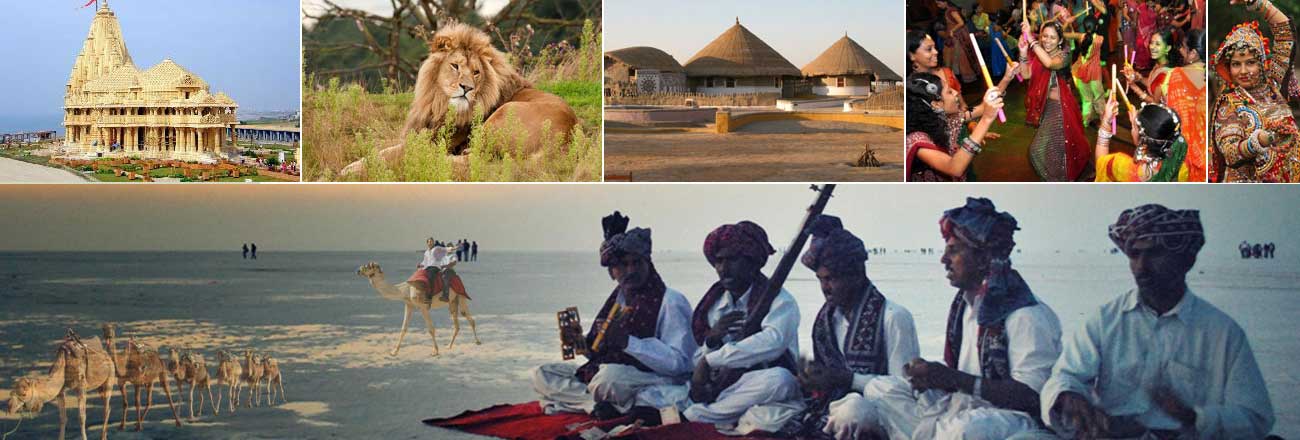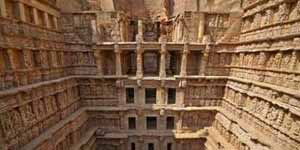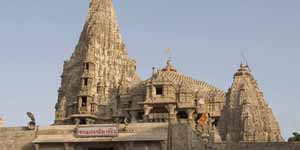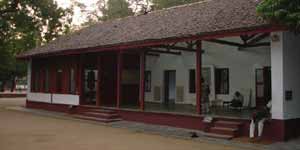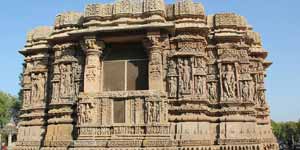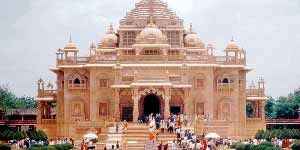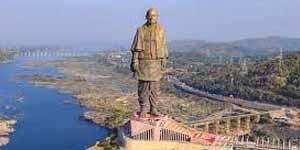
Akshardham Temple
Gujarat’s former capital, Ahmedabad is a treasure trove of cultural and historic sites that fascinates every visitor. Captivated with its beauty, famed poet Ulvi Shiraz portrayed Ahmedabad as a pretty mole on earth’s face.
Religion has a strong influence on the culture of the city that has been designated as the World Heritage City today. Traversing through the old city of Ahmedabad would be a true introduction to the city’s rich cultural heritage.
Ahmedabad proffers a plethora of religious and historical sites. Travellers would be captivated with the awe-inspiring architectural heritage sites located in the city that dates back to centuries. One of the greatest spectacles of the city is the Akshardham Temple, a significant temple of the Swaminarayan Sampraday. It is estimated that the auspicious structure is visited by around two million tourists annually.
This impressive and well known sacred site, Akshardham Temple is located in Gandhinagar. It features the architectural skills of more than 900 artisans. Tourists from different parts of the country visit the place to explore the unrivalled beauty of the famed temple.
Noted for its architectural charm, Akshardham temple illustrates Swaminarayan Sect’s deep-rooted influence in Gujarat’s culture. Unrivalled beauty of the temple allures its visitors with its architectural grandeur, imposing exhibition halls and well maintained garden. It is said that whenever Lord Swaminarayan takes birth on earth he would bring with him, his Akshardham.
History
The term Akshardham means the divine abode of God and as the name specifies, Akshardham temple of Gandhinagar was built in honour of Swaminarayan by BAPS Swaminaryan Sanstha. Inspired by the fourth successor of Swaminarayan, Yogiji Maharaj and created by Pramukh Swami the temple was built in honour of Swaminarayan.
Yogiji Maharaj along with Pramukh Swamiji Maharaj had been the backbone in the progress of BAPS. The classical piece of architecture dating back to fifteenth century also houses the idol of revered Gunatitanand Swami and Gopalanand Swami.
Gunatitanand Swami was a great sage who had been more popular as Akshar Brahm. Legends state that he had divine vision or Divya Drishti through which he had seen Swaminarayan in his childhood.
An influential speaker, Gunatitanand served as a Mahant or the head of the Swaminarayan temple in Junagadh for forty years. He played a crucial role of spreading Swaminarayan’s teachings to the common man and was referred to as the first spiritual successor of Swaminarayan.
Gopalanand Swami was a paramhansa of Swaminarayan Sampraday who had spent most of his time in Vadodara spreading the teachings of Swaminarayan. He was known for his excellence in all the eight stages of Yoga.
Monuments in Gujarat
Monuments in Gujarat The words history, heritage, culture and traditions describe the true glory of Gujarat, one of India's very well-known and truly effervescent states. Each nook and corner of Gujarat, steeped in the past, bears witness to the richness and royal grandeur once enjoyed in this region. Today some of the most unique places that testify to the glorious days gone by are none but Gujarat 's timeless forts and monuments.Gujarat forts and monuments make up a very significant part of Gujarat's many types of tourist attractions. In reality it won't be an overstatement to say; Gujarat 's beauty has reached a unique height with these in the background. Modern buildings built in the middle of the old today appear to exemplify the idea of tradition and step forward in time bringing along old principles. The synthesis of old and modern has fooled every heart and mind with precision. In fact, this combination not only speaks of Gujarat's grandeur but also expresses some of India's sublime values, for which it is recognised throughout the world.
You will come across many fascinating details about them while visiting the forts and monuments in Gujarat on your trip to Gujarat. Not only do you enjoy the undying sagas associated with these sites but also the sophisticated architectural styles in which they boast. These sites gasconade's art work is the sight to feast your eyes on.
Looking closely at Gujarat forts and monuments, you can find that most of these sites exhibit a mixture of Hindu, Islamic and European architectural styles. The time of wooden furniture forming an important ingredient in these areas. You'll enjoy every bit of your tour to Gujarat forts and monuments, to state laconically.

